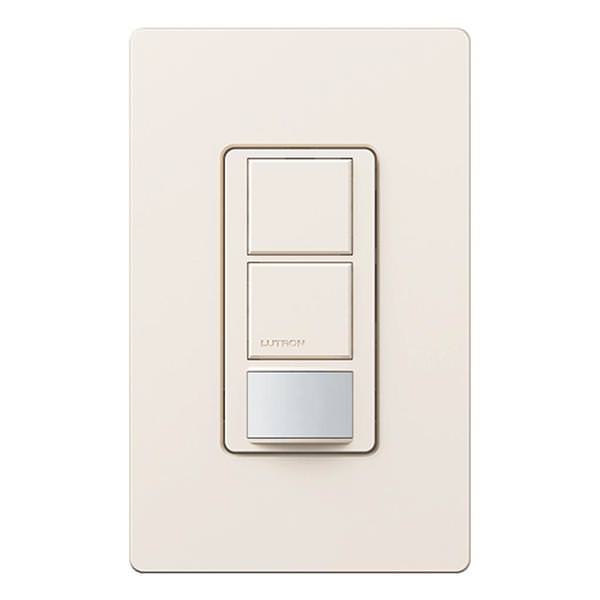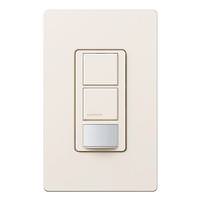| Dual circuit |
| Ground connection required |
| Does not detect motion through glass |
| Sensor can be bypassed to keep the lights on by extending the time out period to as long as 30 minutes. However, you will not be able to override the sensor so the lights stay on indefinitely |
| Do not apply 120V and 277V to different circuits on the same sensor. Use two separate sensors for this kind of application |
|
| Troubleshooting |
| Problem: Power can't be switched on or off |
| Connected green and bare wires to ground. Ground is required for sensor to function |
| After power is restored to the sensor, it may take up to 2 minutes before the unit is fully functional |
| Problem: Lights turn off while space is occupied |
| Sensor's timeout is too short for this application. Increase the timeout as shown in the Installation Instructions |
| Sensor does not have full view of the room. Move objects blocking its line of sight |
| Sensor's sensitivity is set too low, change it to high sensitivity |
| Problem: Lights do not turn on when space is occupied |
| Sensor mode is set to vacancy (manual-on) |
| Ambient Light Detection (ALD) mode is enabled and the room is too bright. Continue to turn lights off within 5 seconds of entering the room to teach the unit the preferred daylight threshold |
| Sensor is set to one of the Ambient Light Detection (ALD) settings and the room is too bright for the current light level setting |
| Sensor does not have full view of the room. Move objects that may be blocking line-of-sight |
| Off-While-Occupied mode may be enabled and the timeout has not expired |
| Problem: Lights turn back on after being turned off manually |
| Off-While-Occupied is disabled. Sensor will turn lights back on 25 seconds after being turned off if room is occupied. If this is not ideal, enable Off-While-Occupied setting as seen in the Installation Instructions
|

